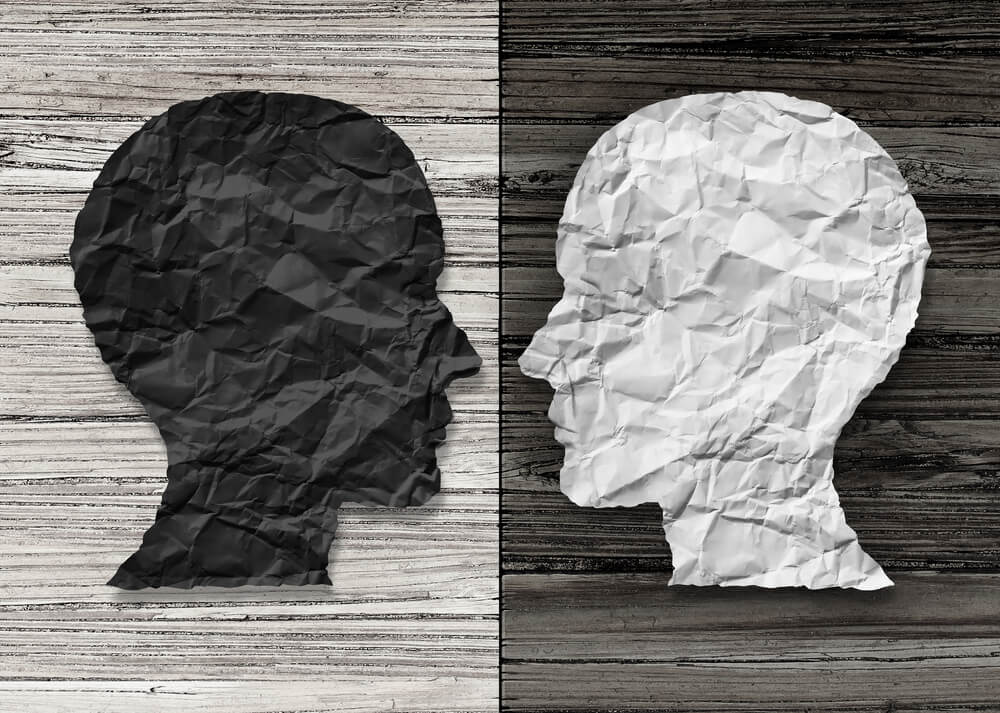Dangerous to ignore: 14 early symptoms of bipolar disorder
'25.10.2020'
Source: Life hacker
This disorder was a big talk a few years ago when Catherine Zeta-Jones was diagnosed with bipolar disorder. Lifehacker.

“This affects millions of people, and I am just one of them. I say this out loud so that people know: there is nothing shameful in looking for professional help in such a situation, ”said the actress.
Largely thanks to the courage of the Hollywood diva, other celebrities began to admit that they were experiencing this psychosis: Mariah Carey, Mel Gibson, Ted Turner ... Doctors suggest bipolar disorder in already deceased famous people: Kurt Cobain, Jimi Hendrix, Ernest Hemingway, Vivienne Lee, Marilyn Monroe ...
The list of names familiar to all is necessary only in order to show that psychosis is very close to you. And maybe even you.
What is bipolar disorder
At first glance, it's okay. Just mood swings. For example, in the morning you want to sing and dance for the joy that you are living. In the middle of the day, you suddenly find yourself lashing out at colleagues who distract you from something important. In the evening, a serious depression rolls over you, when you can't even raise your hand ... Does it sound familiar?
The line between mood swings and manic-depressive psychosis (this is the second name of this disease) is thin. But it is there.
The perception of those with bipolar disorder is constantly jumping between the two poles. From an extreme maximum (“What a thrill is it just to live and do something!”) To an equally extreme minimum (“Everything is bad, we will all die. So maybe there is nothing to wait, it's time to lay hands on ourselves ?!”). The highs are called periods of mania. Lows are periods of depression.
On the subject: 'Marilyn Monroe syndrome': what the actress hid behind the playful smile of a seductress
A person realizes how stormy he is and how often these storms have no reason, but he cannot do anything with himself.
Manic-depressive psychosis is exhausting, worsens relations with others, sharply reduces the quality of life and, as a result, can lead to suicide.
Where does bipolar disorder come from?
Mood swings are familiar to many and are not considered to be anything out of the ordinary. Therefore, bipolar disorder is difficult to diagnose. Nevertheless, scientists are coping with this more and more successfully. In 2005, for example, it was found that about 5 million Americans suffer from manic-depressive psychosis in one form or another.
Bipolar disorder is more common in women than in men. Why is not known.
However, despite the large statistical sample, the exact causes of bipolar disorders have not yet been clarified. It is only known that:
- Manic-depressive psychosis can occur at any age. Although most often appears in late adolescence and early adulthood.
- It can be caused by genetics. If any of your ancestors suffered from this disease, there is a risk that it will knock on you too.
- The disorder is related to an imbalance of chemicals in the brain. Mainly serotonin.
- The trigger is sometimes severe stress or injury.
How to recognize early symptoms of bipolar disorder
To capture unhealthy mood swings, you first need to find out if you are experiencing emotional extremes - mania and depression.
7 key signs of mania
- You experience uplifting and a feeling of happiness for long (several hours or more) periods.
- You have a reduced need for sleep.
- Your speech is fast. And so much so that those around you do not always understand, and you do not have time to formulate your thoughts. As a result, it is easier for you to communicate in instant messengers or through emails than talking to people in person.
- You are an impulsive person: first you act, then you think.
- You are easily distracted and jump from one task to another. Because of this, bottom line productivity often suffers.
- You are confident in your abilities. It seems to you that you are faster and smarter than most people around you.
- Often times, you exhibit risky behavior. For example, you agree to have sex with a stranger, you buy something that you can't afford, or you participate in spontaneous street races at traffic lights.
7 key signs of depression
- You often experience prolonged (several hours or more) periods of unmotivated sadness and hopelessness.
- You withdraw into yourself. It is difficult for you to get out of your own shell. Therefore, you limit contacts even with family and friends.
- You have lost interest in those things that used to really cling to you, and did not acquire anything new in return.
- Your appetite has changed: it has sharply decreased or, on the contrary, you no longer control how much and what exactly you eat.
- You regularly feel tired and lack of energy. And such periods continue for quite a long time.
- You have problems with memory, concentration and decision making.
- You sometimes think about suicide. Catch yourself thinking that life has lost its taste for you.
Manic-depressive psychosis is when you recognize yourself in almost all of the situations described above. At some point in your life, you clearly show signs of mania, at another, you have symptoms of depression.
However, it sometimes happens that the symptoms of mania and depression manifest themselves at once and you cannot understand what phase you are in. This condition is called mixed mood and is also one of the hallmarks of bipolar disorder.
On the subject: Why categorically you can not take antidepressants without a prescription
What is bipolar disorder?
Depending on which episodes are more frequent (manic or depressive) and how pronounced they are, bipolar disorder is divided into several types.
Type XNUMX disorder. It is severe, and the alternating periods of mania and depression are strong and deep.
Disorder of the second type. Mania manifests itself not too brightly, but depression covers just as globally as in the case of the first type. By the way, Catherine Zeta-Jones was diagnosed with it. In the case of the actress, the trigger for the development of the disease was throat cancer, which her husband, Michael Douglas, had long struggled with.
Regardless of what type of manic-depressive psychosis we are talking about, the disease in any case requires treatment. And it is desirable - quickly.
What to do if you suspect you have bipolar disorder
Don't ignore your feelings. If you are familiar with 10 or more of the above signs, this is already a reason to see a doctor. Especially if from time to time you find yourself in a suicidal mood.
First, go to your therapist. Your doctor will ask you to do some tests, including urinalysis and blood tests for thyroid hormone levels. Often, hormonal problems (in particular, developing diabetes, hypo- and hyperthyroidism) are similar to bipolar disorder. It is important to exclude them. Or treat if found.
The next step is to visit a psychologist or psychiatrist. You will need to answer questions about your lifestyle, mood changes, relationships with others, childhood memories, trauma, and family history of illness and drug incidents.
Based on the information received, the specialist will prescribe treatment. This can be either behavioral therapy or medication.
Let's end with the same Catherine Zeta-Jones phrase: “There is no need to endure. Bipolar disorder can be controlled. And it's not as difficult as it seems. "
The material is published for informational purposes only, does not constitute medical advice and does not replace medical advice. ForumDaily Woman is not responsible for any diagnosis made by the reader based on the site's materials, as well as for the consequences of self-medication, and may not share the point of view of the author or expert.







